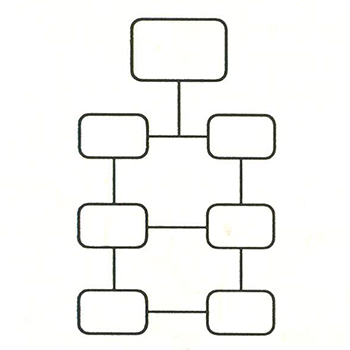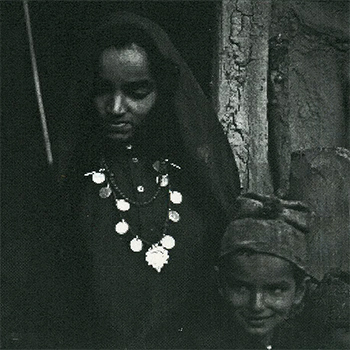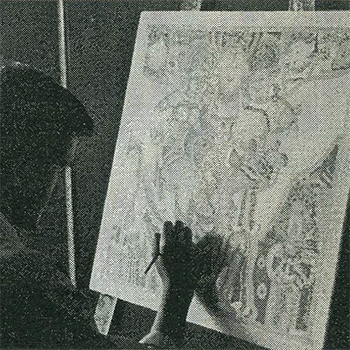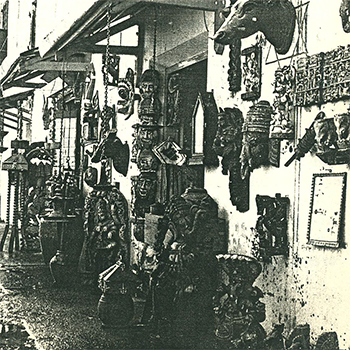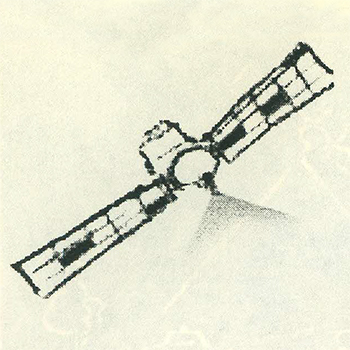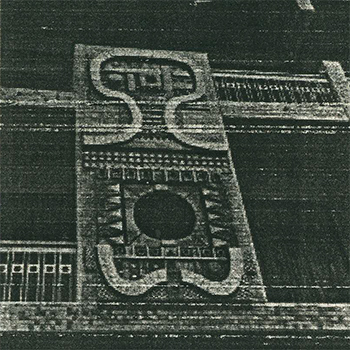Communication Design
Batch 1996-1998
(15 items)
Communication DesignBatch 1996-1998
(15 items)
(15 items)
by Anoop R
Vastuvidya is derived from "Vas," meaning "to dwell" or "to occupy." The vastus refers to all mortal and immortal dwellings. The science of designing and building vastu, or vastusatra, originated in the Vedic period. Kerala in the olden days had adopted the concepts of architectural engineering from Vastuvidya or Vastusatra, which is also known as Sthapatyaveda or Vastusilpa.
Vastusastra, as a science, takes a systematic approach to the planning, design, and construction of Vastu from concept to completion, based on certain thumb rules. But most of the concepts are shrouded in mystery. Most of the time, the theories of this traditional science are explained in a spiritual or philosophical manner. But a scientific approach to this subject may be useful for familiarising the common people with this traditional science.
We can discover some scientific facts hidden in the texts of Vastu, written purely in a spiritual or philosophical language. The Acharyas or Sthapathis who wrote those texts might have also thought scientifically, but the style they used for representation was purely mythical. So in order to translate them into the present world, a new channel of thought has to be opened without disturbing the sacredness of the past. This is a relatively difficult task and, most of the time, impossible as well. But it may be that only with this translation process, the essence of the traditional system be made popular and practised in the present world.
This project aims to connect some of the traditional building concepts used by the sthapathis with modern reasoning. The traditional residential and secular architecture of Kerala is taken as a backdrop to the study. So this project includes some case studies of traditional Kerala dwellings used for constructing buildings and some modern scientific principles that can be related to Vastu principles.
by Kaladhar Bapu
In enormous variety of software packages for designers and other creative professionals is available today. These range from small paint packages like Paint Brush that come with any standard Windows installation to more independent commercial packages like Corel Draw: From advanced painting software like Adobe Photoshop to cutting-edge 3D rendering and animation software like Alias Max and others, The aim of this project is to fully explore and apply design principles to any one of the mentioned softwares, my choice being paint packages such as Photoshop, Fractal Design Painter, and Power Goo. The packages mentioned herein can be broadly classified into two groups, namely, paint packages and animation packages.
The versatility of animation software is well known, and so the possibility of using features of paint packages for creating animations, etc., is being studied in my special project. Hence, I have chosen to work with Photoshop and Fractal Design Painter with all the plug-ins that are compatible with these packages.
by Kamlesh Saxena
Exploring various levels and the surface of information in multimedia, linking information through pathways, and organising it within a basic structure allows it to be put to better use and build a convenient, simple, and easy-to-interact multimedia environment.
Integrating various media together seamlessly facilitates effective use of text, graphics, animation, video, and audio through input and output devices, making for a better multimedia.
Until now, the information contained in any medium had a linear structure, i.e., it was not governed at the user’s end but structured by the designer. What makes multimedia so different is that the entire information can be designed as per the user’s need, i.e., on his request for a story, a message, or an idea. The information is no longer linear as the user has freedom of navigation, he can choose his own path. At the same time, the medium has excellent linking potential.
by Khyati Nagar
Accessories are of course only a part of body decoration, and it is only through mental separation that we can separate body modifications and supplements from the body itself and from each other and extract what we call adornment. Most of the data I could collect concentrated mainly on jewelry, and through these I shall cover the first category, though body painting, tattooing, scarification, and the filling or extraction of teeth are equally important. Most involve more permanent and dramatic transformations (some examples of this are included here) than does the wearing of jewellery. Movements and gestures are also relevant. Indeed, these may be so characteristic that they may be reproduced so as to suggest the presence of adornment even when, in fact, it has not been worn. Igbo women in Nigeria, for instance, typically wear heavy brass anklets of plate-like proportions, which cause them to have a rolling gait as they walk. This style of movement is often imitated by those who are not adorned in this way to suggest that they too are accustomed to decorating in such a prestigious manner.
Jewellery is also set apart from other means of transforming physical appearance in that it appears familiar; we think we know what it is and what it does. However, although the physical alteration of the body may be regarded as an act of beautification by those who practise it, it is often characterised by others as barbaric and brutish.
by Kshitija Patole
Every society and its people have simple, practical, and useful knowledge, which is often expressed most creatively and effectively by the people of that society through their tales and toys. Thus, each region has a different and unique character that is reflected through these sources. These craftsmen have unique ideas for playthings that become popular in their areas. Many a times the basic principle behind the toy in many regions might be the same, but they reflect the look of the society from which it belongs to.
Today in the markets, you do get to see low-cost toys that are everyday playthings for millions of Indian children, past and present. But as compared to the past, toys made of clay are rarely seen. Most are factory-made toys using materials like plastic, metal, wood, etc.
To get back into the past, it is interesting to find that the folk toys of India, particularly those found at the excavated sites of ancient centres of culture, show very striking similarities to those discovered in Crete and ancient Egypt. As far as India is concerned, the most ancient toys of which we have any record belong to the period of the Indus Valley Civilization, dating from 2500 to 1700 BC, and bear a surprising affinity to the hand-made folk toys of a much later date. At the ancient sites of Mohenjodaro and Harappa have been found terracotta toys representing human figures, farm carts, cows, sheep, pigs, oxen, birds and animals, rattles, whistles, balls and kitchen utensils all pointing to a settled rural existence. It is worth noting that some of these toys, like bulls with nodding heads, were apparently worked by string, indicating that the toy makers of even such remote times had a mechanical bend of time.
Later Sanskrit literature literally abounds in references to toys and children’s games, and we are forced to the conclusion that the children of ancient India must have had a variety of toys to play with, toys which were not merely for amusement but instructive as well, and often decorated, though simply, indicating that the aesthetic aspect was not neglected by the toy makers of old.
by Manish Sampat
Pottery is any kind of dish, pot, vase, or other object that is formed of clay and baked until it is hard. The finest chinaware and the roughest clay pots are both forms of pottery. The science of making pottery is called ceramics. Pottery has been called the oldest of all the art forms. Men were making pottery for thousands of years before the introduction of metal. Man learned and developed hundreds of different ways of making pottery and decorating it so that it could be beautiful as well as practical.
by Manoj Sharma
The idea of doing a project on Gujjars came to me not very recently. It was some six years ago when I first had a little closer look at the tribe, though at the time I should confess that I didn’t have any soft corners for the tribe. The tribe appeared to be violent and withdrawn. This relates to my past experience, when I wanted to take some pictures of the tribesmen and they stopped me from doing so. They also asked me to tear off the sketches I had done, reasoning that it was against their religion to do so. But this time the story was quite different. Probably the first time I went to a Gujjar Dera was like tourist, someone looking at somebody’s life-style from a distance, which of course never works. In the beginning of the project, I didn’t know how or where to begin. I started by looking for ways in which I could go and stay with Gujjars. Of course, anybody who heard of my plans laughed at me, since it was not considered easy to stay in a deep forest with people totally unknown, especially during the winter. The place where the Gujjars were to be found was in the deep forests of the Shivalik hills on the Dehradun-Sahranpur border. The village nearest was Mohund, and the city nearest was Dehradun, some 30 kilometres away. from the beginning of the forest. I did have no doubt problems, but believe me it is just a question of accepting the hugeness of something, which nature is, and getting in harmony with it. The nature was in its most untouched form, when the jungle has its own rules.
by N Manoj
In 1971, archaeologists discovered the cave paintings of Bhimbadka, situated 45 km from Bhopal, the capital of Madhya Pradesh, and over 200 rock formations in the area and its surroundings. Figures of men on the hunt, animals, and Tantric symbols formed the premise for these paintings.
According to noted archaeologist Dr. Vishnu Wakenkar, the oldest of these paintings could be as old as 20,000 years, while the most recent ones would be around 500 years old. Similar to other such paintings found elsewhere in the world (Altamira in Spain and Lascaux in France), here too in Bhimbadka, the paintings, rather than merely imitating real life as it existed, sought to explore the truths behind those happenings. However, cave paintings can only be regarded as forerunners of the art of mural painting. True murals are those that conform to the following standard of preparation:
-on a constructed wall, a rough plastered surface is made. This is smoothed over by a second finished surface. Paintings done on this surface are actually murals.
The tradition of embellishing temples and places with mural paintings in the classical style dates back to at least 2,200 years in India. From the wall paintings at Ajanta, which have stood the test of time, we can comprehend the standards that once existed in the ancient towns of Pataliputra, Ujjaini, Vaishali, Varanasi, and Rajgruh. It was between 1 BC and BC that the paintings at cave nos. 9&10 in Ajanta were done. The only Buddhist themes of the paintings that are still intact are those dealing with the worship of Bodhi Vriksha and the Jataka Tales.
by Prasad Bartakke
Welcome to the World Wide Web. It has "X" information, and its content has to be designed to address the users' needs. But how is this really done? And what does it really contain? a search to find the answers under a special theme. The next few pages not only discuss what is content but also why it is important, which aspects have been focused on, along with some design principles and many dos and don'ts, aided by a few alternatives, and then conclude. They are all aspects of one topic—the content. The general option is that web sites are boring, badly designed, and low in editorial content. But then why does this really happen? or so we should believe. Instead, one should consider the widespread gloom of homepages a real challenge. Simply inserting dates and putting information into the website is not enough. The World Wide Web has a logic all its own. The primary goal is to inform the masses. This information can be in many forms: news, magazines, advertisements, training, and just about anything you want to know about everything digital.
by Rajesh N S
The aim of this project is to observe the coexistence of ethnicity and modernization, to identify a Historical vernacular pocket in metroplolis, learn about its religious and cultural rootings and also to observe the changes due to the onslaught of modernization and how traditional culture has endured or adapted itself to form a new self into the present times. The study extends into that of images, architecture, remains, and monuments, as well as its people, their needs, fears, and desires. This also leads to a chance to compare the city with the vernacular pocket or it is the study of co-existance of tradition and modernization. The role of a designer in this project is that of an observer who pans his eyes through the past, present, and future of that community.
Kochi, as it is known to the western world, is "the queen of the Arabian Sea." Her contact with the western world, which dates back to history, explains her evolution as a major metropolis and the trade capital of Kerala. She is different from the other parts of the state as a lot of radical changes have taken place in her history. The vernacular pocket identified for this is the Jew Town of the Mattancherry township, a major part of the metropolis of Kochi. Mattancherry is a small town in Kochi which is not much affected by the fast growing pace of the city and has a mix cultured community comprising of Kerala hindus, the biggest part, Muslims, Christians and a minor North Indian community of Parsees and Gujarathis mostly. The jew town part of Mattancherry was once in her full glory dating back to centuries and now on its journey, becoming a monument of that glorious past, with a few jews freezing inside it, still the conservative nature and strong social bonds of this community is another reason for working on this particular area.
The study extends to the documentation of people, places, objects, phenomena, activities, and rituals, looking at and observing things from a designer's point of view, for whom an awareness of and information on the society in which he lives is very important.
by Ram Ganesh
"And, as imagination bodies forth The forms of things unknown, the poet’s pen Turns them to the shapes and gives to airy nothing "A local habitation and name"—William Shakespeare.
Shakespeare wasn’t describing virtual reality, but his words capture its essence. Virtual reality, or VR, allows human imagination to create shapes and sounds out of invisible electrons racing through circuits. Like the poets to whom Shakesphere alludes, science fiction writers have long imagined the virtual worlds that we can now explore due to the development of this sophisticated technology. Virtual reality is a new poet’s pen, a computer tool that turns imagination and thought into simulations, virtual worlds, and habitats of airy nothing that appear real to our senses. These worlds are places where we can both work and play.
Immersion and interactivity are the two criteria on which VR simulations are based. Immersion refers to the ability of participants to believe they are "present" in the virtual world and can navigate through and function within the simulation as if it were physical reality. Interactivity pertains to the participant’s ability to manipulate objects encountered within a simulation, depending on the hardware and software. You may be most familiar with the recreational examples of VR. However, VR technology is being applied in professional fields as well. This project describes examples of such applications in the fields of medicine, architecture, engineering, the military, science, and financial analysis. What does the future of VR technology hold?
In addition to the research that is being done here, I have given a concept of how VR can be put to practical use in taking advantage of the communication network and the collaborative nature of the work cops undertake.
by Rina Parak
India has housed a widespread variety of religious systems wherein thrive a number of casts, either interconnected or independent of each others existence. Hindu is a term which was coined not for a religion but the people dwelling beyond river Sindhu by the Afghans, the Persians, etc. later with the influences of foreign tribes Hindu became a term describing a religion so as to differentiate them from the Muslims, the British, and other foreigners.
In every religion, the roots of worship spring from the very cradle stage of civilization. At this stage the people start worshipping what they fear-mainly elements of nature or what is awe inspiring, or what they would consider as a helping elements of nature or what is awe inspiring, or what they would consider as a helping element for e.g. rain for the crop. In every civilization-be it the Indus Valley or the Greek, the Mycenean, Egyptian, or any other the cause of worship of God remained the same. Initially these forces were worshipped as they were i.e. in their original form, but with a feeling of the existence of a supreme being in them that became pre dominant and the prime element of worship, which later gained an anthropomorphic form with various attributes concurred upon them, to the extent that now a days the Gods (beings that were worshipped) have become so popular that the element from which they emerged have almost long been forgotten e.g. Siva is meant to denote time and fertility, but rarely does any layman know about the associations of the various elements surrounding the deity.
by shailesh-shilwant
by Shilpi Agarwal
A mural is something that is embedded in a building's wall. The difference between a painting and a mural is that the painting can be removed, while the mural is done on the wall itself. Walls fracture and define space in terms of human needs. They establish the boundaries that contain or exclude activities and involvement, thereby becoming part of the environmental condition. As a result, it is the mural that has the power to make this wall an area of special enrichment.
A mural is not merely a painting looked at through a magnifying glass. The principles used in its design, its concerns, and its considerations are all quite different from ordinary painting. Painting is an independent art form in and of itself. It is independent of its environment and rests on its own merits. A mural, on the other hand, does not have a separate existence. It is an integral part of the building in which it is placed. A painting is viewed from a fixed point, whereas a mural artist does not have this advantage. It is unreasonable for him to expect that his viewer will get a clear view all the time. As a result, it increases his responsibility in selecting the theme, size, color, and technique.
by Siva Prakash
In our society, bi-lingual communication is an effortless activity where the mixing of words in daily communication is routinely observed. In interregional marriages, the partners and particularly their children are seen to effortlessly switch between two languages while communicating. Being bilingual is common practise in today's popular media, such as television soap operas that compare events and sports commentaries.Bilingualism is one of the most effective ways of communicating and connecting in a multilingual society like India.How bi-lingualism grew up in Indian society Being bi-lingual at home and at work gave a sense of preserving roots as first-generation immigrants living in a world of different languages
. Crossing regions looking for opportunities and settling down, cosmopolitan cities. School education, national language, and English. Three language formula
The European Union is proposing a two-language education policy in Europe, i.e., a student will learn one extra European language apart from the mother tongue. It is a primary step towards developing an European community, which will make marketing communications easier and give a picture of a united Europe. Bilingualism is a necessity for globalization. The concept of a second language is not novel in India. Sometime back, a three-language policy was tried, which had a very disastrous effect on students. The study of languages should be according to choice, for example, first language or second language.


